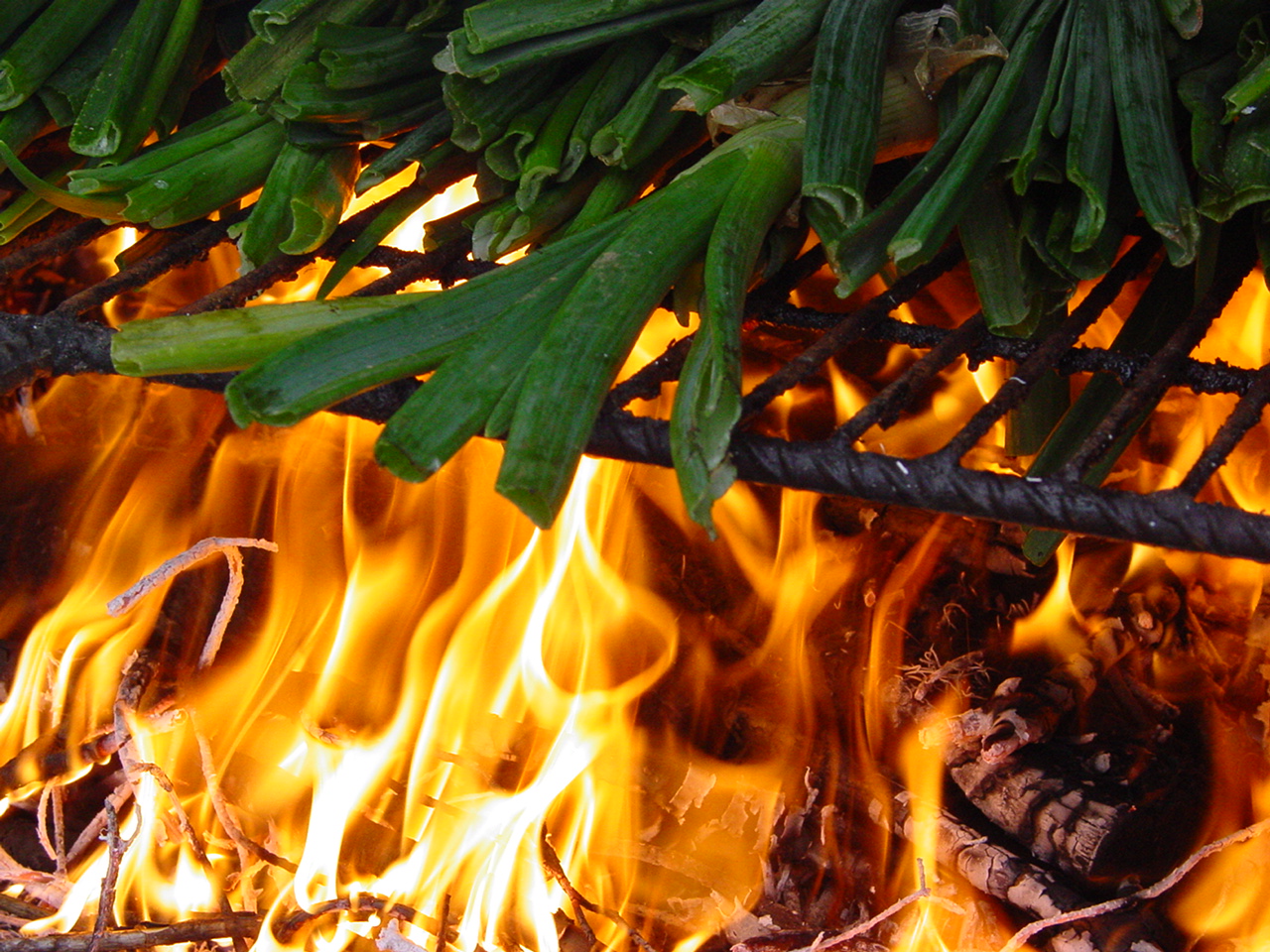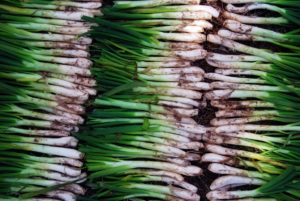

The Calçotada is a gastronomic event celebrated in Catalonia. Having originated in Valls, Alto Campo, in the province of Tarragona, the event soon expanded into the other provinces.
The calçot is a green onion from Lleida, Catalonia. This type of onion is milder and less bulbous than the regular onion. The white part of the calçot can be 15cm to 25cm long, with a diameter between 1.7cm and 2.5cm.


No one knows exactly how calçots came to be such a famous dish, but the most common version of the story is that the way it is prepared today was discovered by a peasant called Xat de Benaiges in the end of the nineteenth century. When roasting a calçot, Benaiges accidentally let it burn. He removed the outside layers that were the most burnt, realizing the inside of the calçot was actually soft and tasty.
Table of Contents
The Calçotada is usually celebrated towards the end of the winter and beginning of spring. The calçots are prepared directly over fire, in a barbeque grill. When the exterior layers have turned black, starting to open and let out some foam, they are removed from the grill.
They calçots are gathered in groups of twenty five and wrapped in newspaper so they can finish cooking with their own heat. The calçots are usually left inside de newspaper for about half an hour.
To eat a calçot, people sometimes use a big bib that can go as far as their knees. This is necessary because the process of eating the calçot is messy since the external, burnt layers have to be removed, which makes people’s hands and clothes become quite dirty.
When prepared during a calçotada, the calçots are usually followed by a second dish composed mainly of meat and sausages that are prepared in the same grill used to prepare the calçots.
There are restaurants in Barcelona that serve calçots, but this only happens during the last months of winter and the beginning of spring.
Barcelona’s Mediterranean climate, with increasingly warmer and longer summers, makes air conditioning an essential feature…
Maybe you're thinking about selling a property or you've just inherited one or more real…
Do you enjoy strolling among trees and plants, away from the hustle and bustle of…
If you are planning to move to Barcelona for a few months or permanently, one…
ShBarcelona establishes itself as the leading agency within the Apialia Eixample Group, reaffirming its position…
Are you going to visit Barcelona this 2025? The vibrant Catalan capital once again becomes…